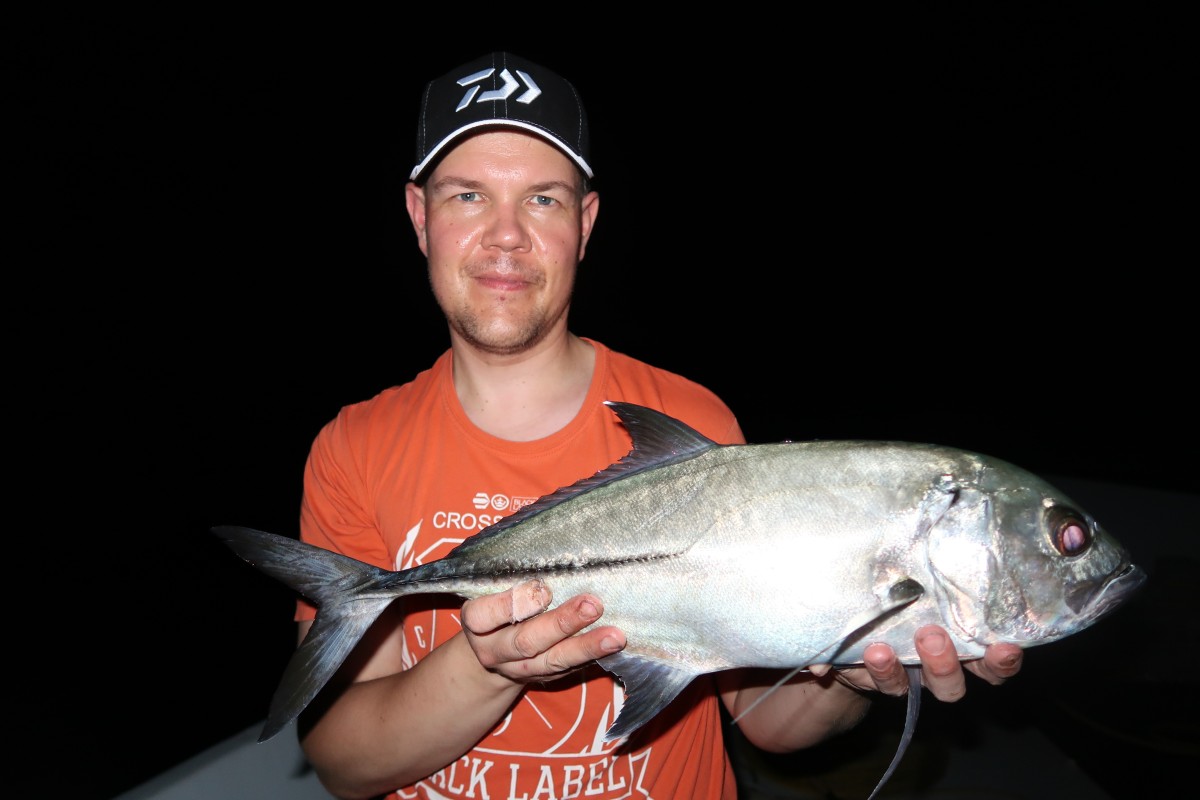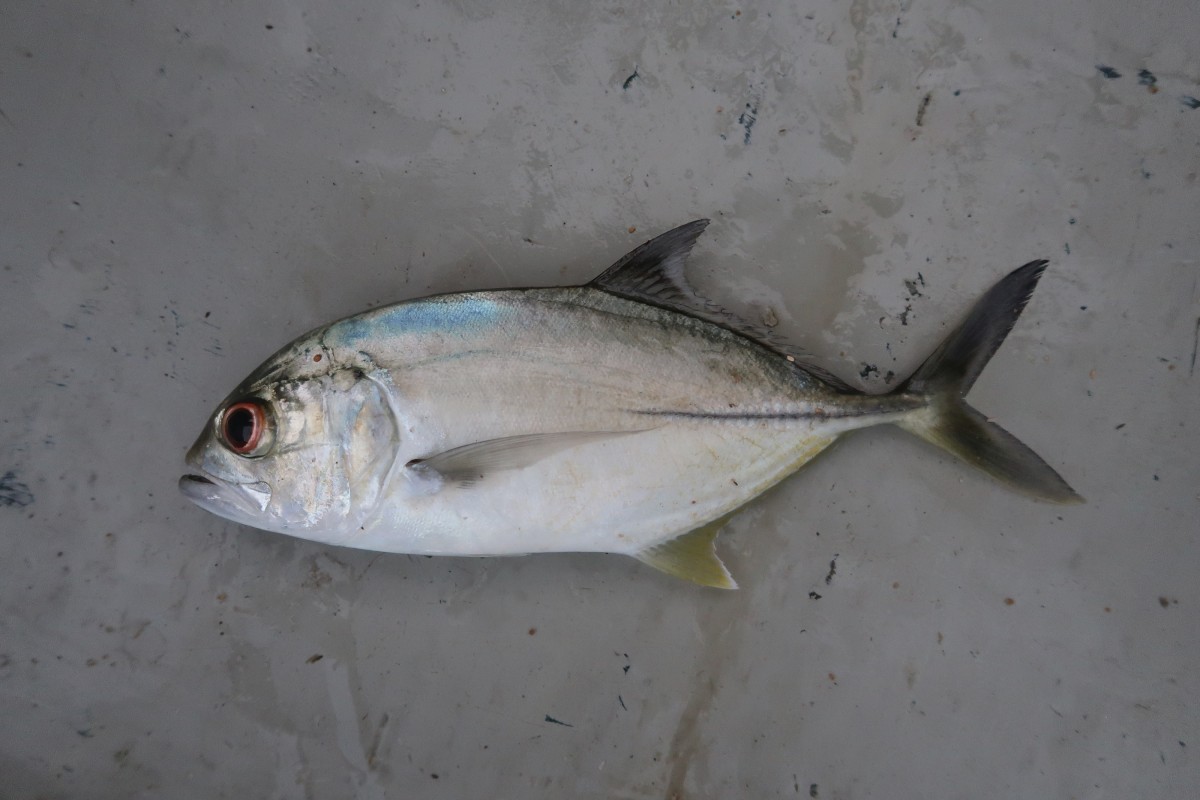Bigeye trevally
(Caranx sexfasciatus)

Classification
General data
The bigeye trevally (Caranx sexfasciatus), also known as the bigeye jack, great trevally, six-banded trevally and dusky jack, is a species of widespread large marine fish classified in the jack family Carangidae.
The bigeye trevally is distributed throughout the tropical waters of the Indian and Pacific Oceans, ranging from South Africa in the west to California and Ecuador in the east, including Australia to the south and Japan in the north.
The bigeye trevally is best distinguished by its colouration, having a dark second dorsal fin with a white tip on the lobe, and also possessing a small dark spot on the operculum. Other more detailed anatomical features also set the species apart from other members of Caranx.
The species is known to grow to a length of 120 cm and 18 kg.
It is predominantly an inshore fish, inhabiting reefs down to depths of around 100 m in both coastal zones and offshore islands, often venturing into estuaries and sandy bays as juveniles. The bigeye trevally is commonly found in large slow moving schools during the day, becoming active at night when it feeds, taking a variety of fish, crustaceans, cephalopods and other invertebrates. The fish is known to move from a more crustacean dominated diet as a juvenile to a nearly completely fish dominated diet as an adult.














